
Annual report by MAS President, Steve Samuels, makes interesting reading showing how active and successful the organisation has been.


Annual report by MAS President, Steve Samuels, makes interesting reading showing how active and successful the organisation has been.
The NSW DPI Angler Access website, has the ability to provide you with a georeferenced map of a selected area showing access points. This is in the form of a special pdf. Internet access is required to connect to the access website, but the map created can be downloaded onto your phone for viewing offline.
The pdf map is used by an app called Avenza Maps to display your current location on the map without the need for mobile data connection.
Production of the map is a little complicated. The screenshots here display the process using a phone, but should be easier on desktop computer.
Go to the access website and zoom to the area of interest.

On my phone I couldn’t see the print button but is available via the green button at the bottom right of screen.
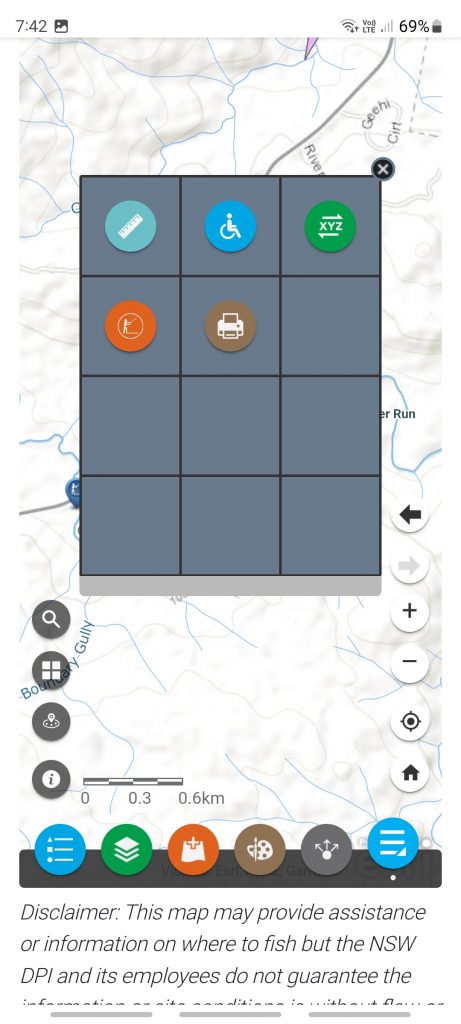
Press the brown print button.
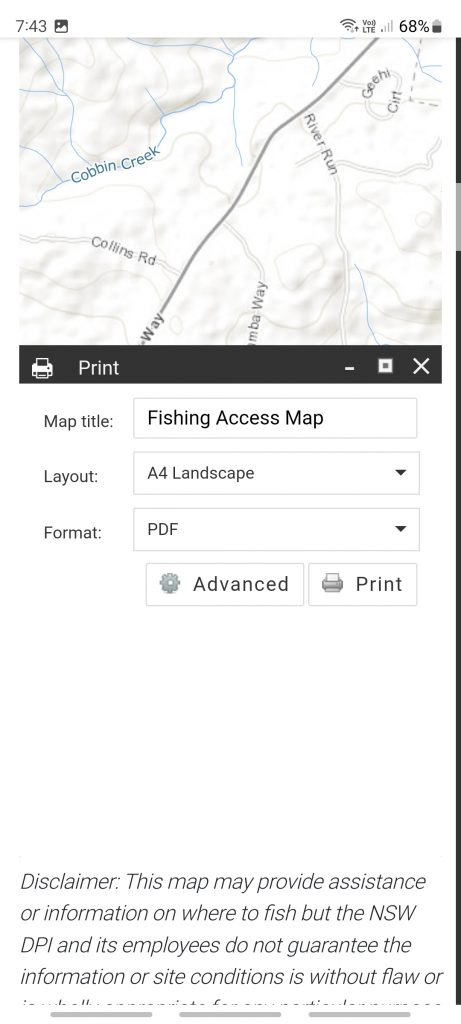
I tinkered with some of the advanced settings – not sure if it had any real effect, but I thought the map should be larger. I also opted for km scale.
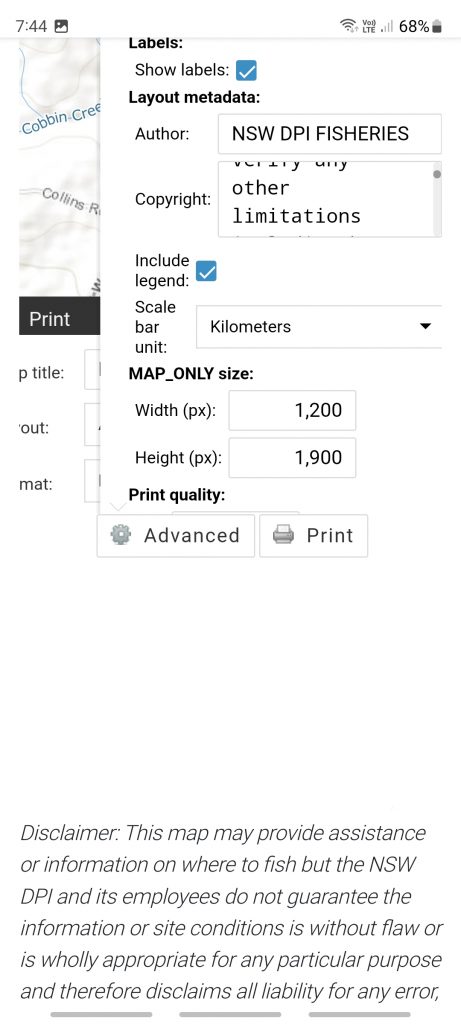
Then hit print button.
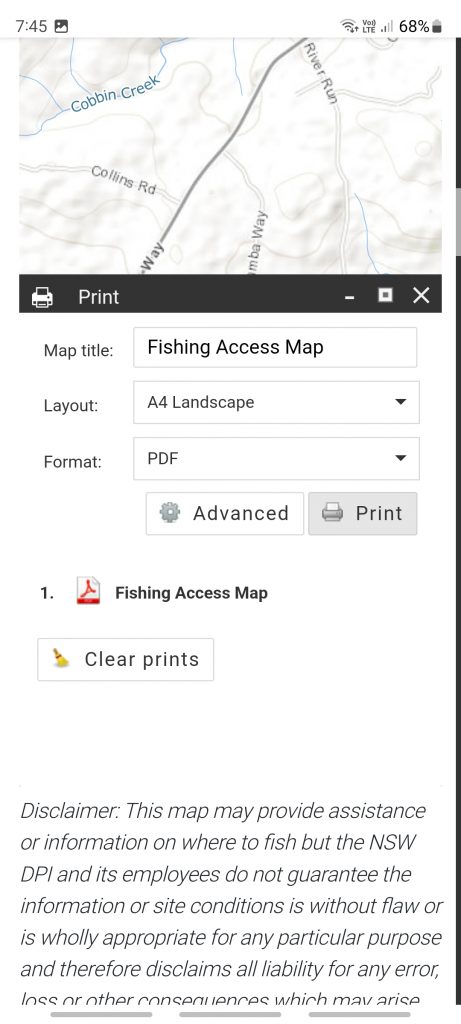
Then tap “1. Fishing Access Map”

Tap ‘Save to Downloads’. Unfortunately it will be saved with the horrible name. I take steps via the app MyFiles to rename it.

When you open Avenza Maps, go to My Maps which shows maps you have already loaded. Here you can see I’ve got a number already. Unfortunately the free version of Avenza limits you to three maps … we’ll deal with that in a moment.

Press the orange + button

Press Download or import a map

Press Cloud storage or device

Here you can see my map file renamed as Mowamba. If you produced the pdf on your desktop and transferred to phone you may need to navigate to where you stored it. Click on your pdf map name

The message above is because of the 3 map limit, you will not see this when starting to use Avenza. Click on PROCEED ANYWAY
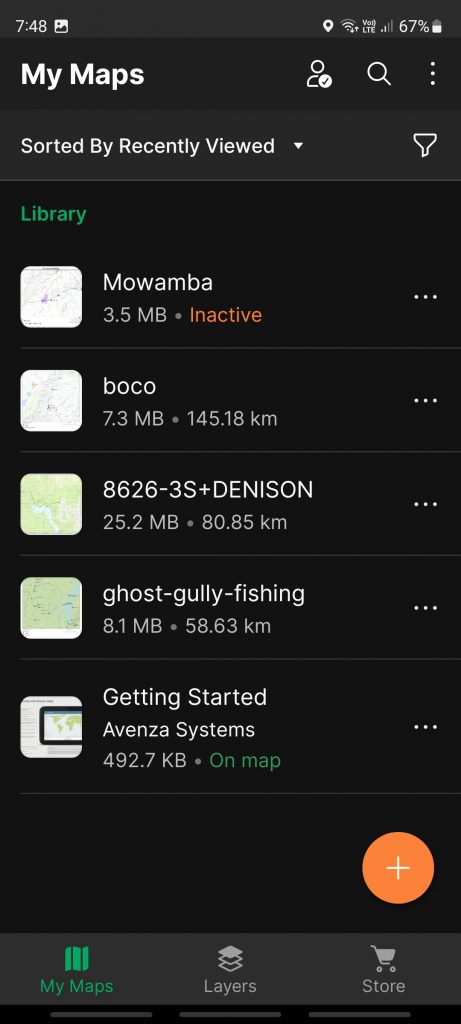
I tapped on the three dots next to an unwanted map and chose to delete it. I suspect the pdf remained on my phone somewhere so I could reload in the future. In due course I could tap on the Mowamba map
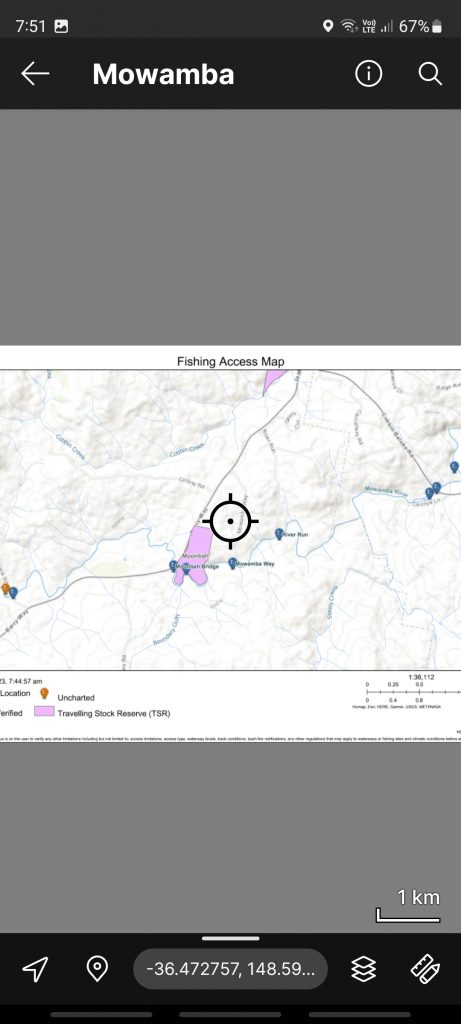
Talk to Bill sometime if the instructions are too confusing and get a live demo.
The latest news is available. Hot topics:
Available here:

Message from Stefan:
Hello fellow club members
Welcome to the new year! Time to get competitive!
This season still holds opportunity for some good club fishing, still time to get out and bag some fish and provide great interaction with other Canberra Anglers’ members. There is however an event on the horizon which would allow us to interact with some new people from further afield in a friendly competitive fishing meet.
I would like to promote this new event, or in any case a resurected event, that will encompasses fishers of the greater NSW region, to be held at the Glenbawn Dam environs, near Scone in the Hunter Valley.
The event has in the past been seen as quite prestigeous, there are trophies on offer. Have a look at the website for further details in order to decide to join me and participate.
The event is the annual INTERCLUB MEET as organised by the CFA in years past. I would like to “captain” a team from our club to participate in the event being held in mid MARCH.
So I am asking for a show of interest to form a group of representatives from our club to be involved and join me.
The 2023 Fly and Lure Fishing Interclub Meet is being run by the CentralCoastFlyRodders on behalf of the NSWCouncil of FreshwaterAnglers. The Meet will be at Lake Glenbawn and surrounding streams from Friday17-Sunday19 March 2023.
Full details of the Interclub Meet 2023 are available on the CCFR web site:-
http://www.centralcoastflyrodders.com.au/
Go to the CCFR website, click on the Interclub banner heading where you will find links for General Info, Program and the competition rules for Fishing, Skish (Plug) Casting and Fly Casting.
Although this is a fundraising event for the NSWCFA, the costs have been held to a minimum. There is a registration fee of $50pp to cover the major cost, that of providing the two meals, Saturday BBQ lunch and Sunday brunch.
Accomodation is on an individual basis however.
Please get back to me with an indication of interest or any relevant querries.
Hope to hear from you.
Stefan
Hi Club Members,
I hope you all had a great holiday season and caught up with friends and loved ones. I trust that most of us would have taken the opportunity to also wet a line of your choosing. The committee are setting up our club night and fly tying program for the next quarter and are interested in your thoughts of topics you would like covered and your interest in presenting to the club or hosting fly tying with a fly of your choice. Its great to hear about club members adventures, lessons, tips and tricks. Please email committee@canberra-anglers.asn.au with your thoughts or volunteering for one of the club night events.
We currently looking for a presenter for our 8 February meeting….any volunteers?
Thanks
Claude
This free article popped into my inbox today. Provides a very straightforward description of key insects in what looks like a pretty generic way. Even has suggested sizes to match our flies to the natural.
It will likely be North American conditions. We’ll need our resident entomologist, Jaime, to endorse.
https://askaboutflyfishing.fliesforsale.com/match-the-hatch/
As you would expect, offers to sell you appropriate flies at the bottom.

Some good news from MAS
Dear supporters
Just an update to let you know that the second batch of sub-adult rainbow trout were released into Googong Dam today. This stocking of 1500 fish compliments a similar release earlier in the year. The stocked fish ranged from 200 to 250mm and they should stand a great chance of avoiding redfin predation.
Regards
Steve Samuels
President
Monaro Acclimatisation Society Inc

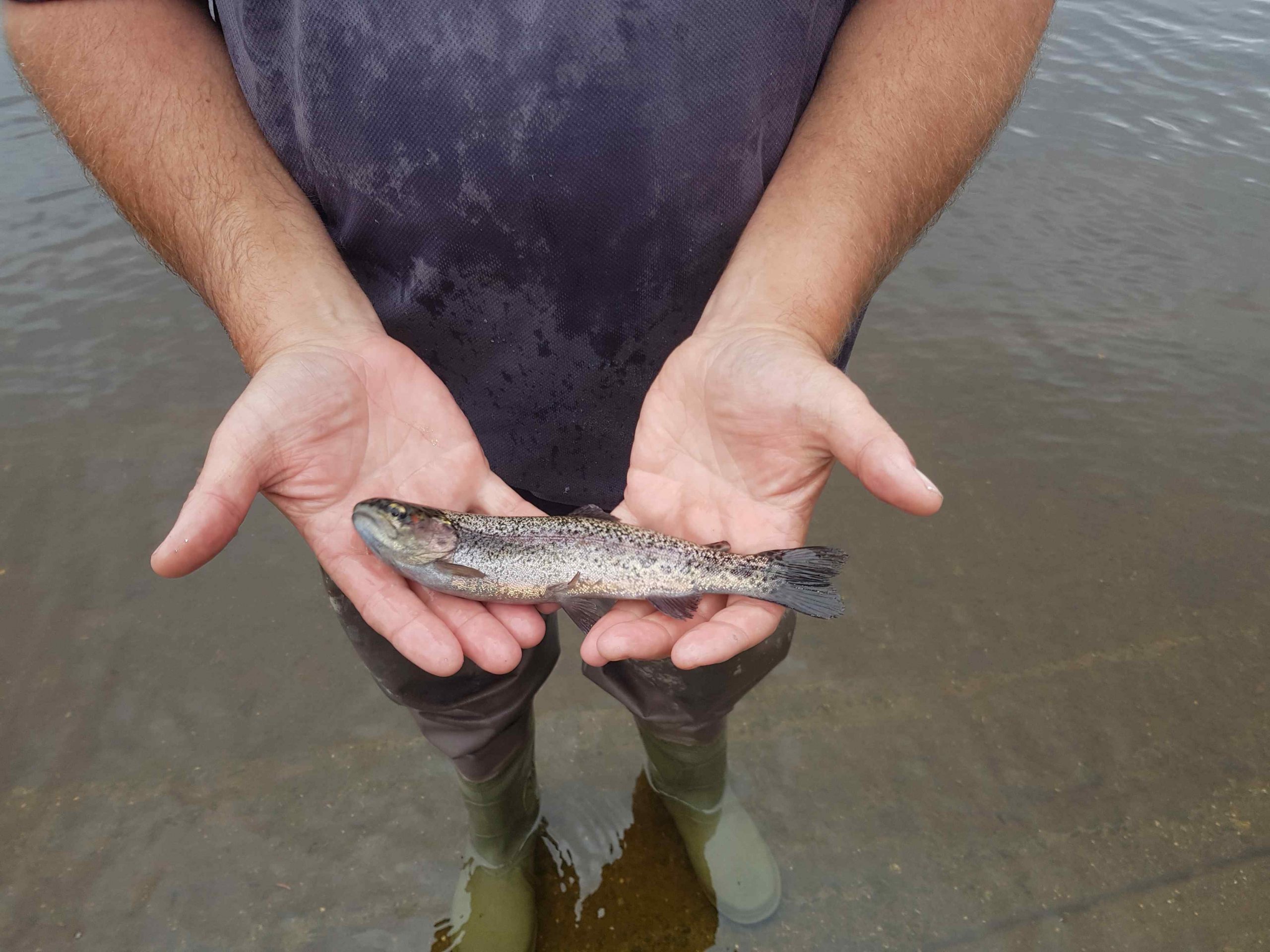
CAA President Claude was recently interviewed by RiotACT about fishing in the region. Here is the final article.
https://the-riotact.com/act-fishing-guide-where-to-go-and-what-to-avoid/628763
CAA was approached by a local news outlet. They asked a number of questions in preparation for an actual interview. President Claude, with some assistance of others in the club, has assembled the response. It was thought this was worthy of being retained for any future use. Here it is, it will also be included in our ‘Tips’ category.
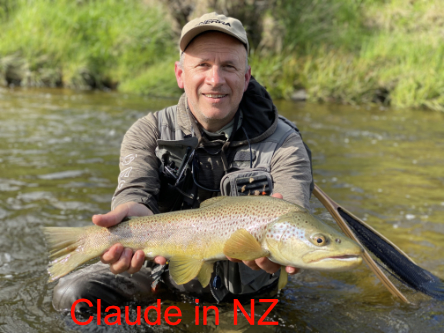
Welcome to 2023 – we all hope you had a safe and enjoyable festive season.
John’s report on our December Saltwater Event here – thanks mate. Much appreciate a report from Lyall about control (volunteer) activity with the recent National Fly Fishing comp. Al McH has sent me a colourful report on northern Victoria fishing – almost entices me to emigrate.
I believe report from a recent trip to NZ by our President is in preparation as is a report by BJ and Al McH on back country KNP fishing – a sneak preview is photo of the month.
Some photos here of the end of year BBQ and big raffle. Some folk won multiple times but were kind enough to permit ‘redraw’.
Some update to our website. I just noticed that our web address has ‘gone secure’ … it now has that little ‘s’ in the https prefix. The old http address seems to be continuing to work, but you might want to change any bookmarks to our webpage. The automatic notification of blog posts still seems to be using the http address.
This edition will come out just before our January Carp event Sun 15 Jan – tips on our news blog.
Any and all submissions from members for future newsletters will be appreciated anytime.